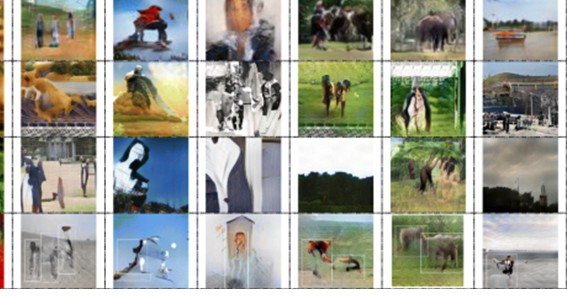The realm of artificial intelligence and computer vision has seen rapid innovation, particularly with subject-driven text-to-image generation via W Chen. This concept revolves around generating images based on detailed textual descriptions that contain a specific subject or object the user wishes to emphasize. By leveraging large language models, advanced generative algorithms, and domain-focused training, researchers like W Chen aim to push the boundaries of what is possible in image synthesis.
Understanding Subject-Driven Text-to-Image Generation
-
Key AI Frameworks
Many subject-driven text-to-image systems use Transformer-based or diffusion-based models. These architectures help interpret complex text prompts to produce coherent, high-resolution images. -
Why “Subject-Driven” Matters
-
Enhanced Control: By focusing on a particular subject, models can generate images that are more aligned with user intent (e.g., a specific person, object, or style).
-
Contextual Consistency: Subject-driven methods maintain consistency across features like color, shape, and style elements relating to the main subject, ensuring the generated images are faithful to the textual prompt.
-
-
Challenges in Implementation
-
Data Quality: Training robust models requires diverse, well-labeled data to represent the subject in varied contexts.
-
Ambiguity in Language: Text prompts can be open to interpretation. Proper disambiguation techniques (like adding more descriptive terms) are crucial for precise outputs.
-
Computational Demands: High-fidelity text-to-image generation often demands significant GPU resources and efficient optimization strategies to achieve quick, high-quality results.
-
-
Breakthroughs by W Chen
-
Innovative Architecture Choices: W Chen’s work often highlights specialized layers or attention mechanisms tailored to maintain subject identity.
-
Multi-Modal Fusion: Research indicates a focus on fusing text embeddings and visual features in a way that retains crucial subject information throughout the generation process.
-
Interactive Feedback Loop: Some of W Chen’s experimental setups incorporate user feedback, refining the generated output in iterative steps to achieve the desired subject details.
-
Real-World Applications of Subject-Driven Text-to-Image Generation via W Chen
-
Creative Industries:
-
Graphic Design and Marketing: Rapidly prototype advertisements or marketing collateral using automated visuals that match a brand’s specified subject (e.g., mascots, products).
-
Entertainment: Game designers and animation studios can quickly conceptualize characters and settings aligned with textual storyboards.
-
-
Personalization in E-Commerce:
-
Custom Products: Shoppers could describe desired designs (e.g., a mug with a particular animal or pattern), and the system generates previews of the finished product.
-
Virtual Try-Ons: While primarily used for garments, subject-driven methods might help replicate brand-specific mannequins or highlight distinct style elements.
-
-
Educational and Research Tools:
-
Interactive Learning Materials: Teachers and researchers could create illustrative content for textbooks or presentations by specifying subjects like historical figures or scientific phenomena.
-
Data Augmentation: Researchers might generate additional images under specific constraints, improving training datasets for other computer vision tasks.
-
-
Art and Cultural Preservation:
-
Museum Exhibit Visuals: Generate missing parts of damaged artworks or create hypothetical reconstructions of historical sites by describing them textually.
-
Digital Storytelling: Writers can vividly bring narratives to life through on-demand illustrations, engaging readers with tailored imagery.
-
FAQ
-
Q: How does subject-driven text-to-image generation differ from generic text-to-image models?
A: Subject-driven models place a stronger emphasis on maintaining the identity, features, and context of a specific subject mentioned in the prompt, resulting in more accurate and consistent images. -
Q: What role does W Chen play in advancing this technology?
A: W Chen is known for pioneering research approaches that refine how models parse language about a subject, ensuring coherence and fidelity in the resulting visuals. -
Q: Are there any ethical concerns with subject-driven text-to-image generation?
A: Yes. Issues like deepfakes, unauthorized use of personal images, and potential biases in training data are all concerns. Ongoing research focuses on incorporating safeguards and transparency in model outputs. -
Q: What technical skills are required to work on these models?
A: A background in machine learning (particularly deep learning), proficiency with frameworks like PyTorch or TensorFlow, and familiarity with computer vision concepts are essential for developing or improving these systems. -
Q: How can one get started with subject-driven text-to-image generation?
A: Begin by exploring open-source libraries (e.g., Stable Diffusion or DALL·E mini clones) and then adapt them to emphasize specific subjects. Reading relevant papers from W Chen and other researchers will also provide in-depth technical guidance.Stay tuned to learn more about teac-w-800r-drive-belts-replacement










